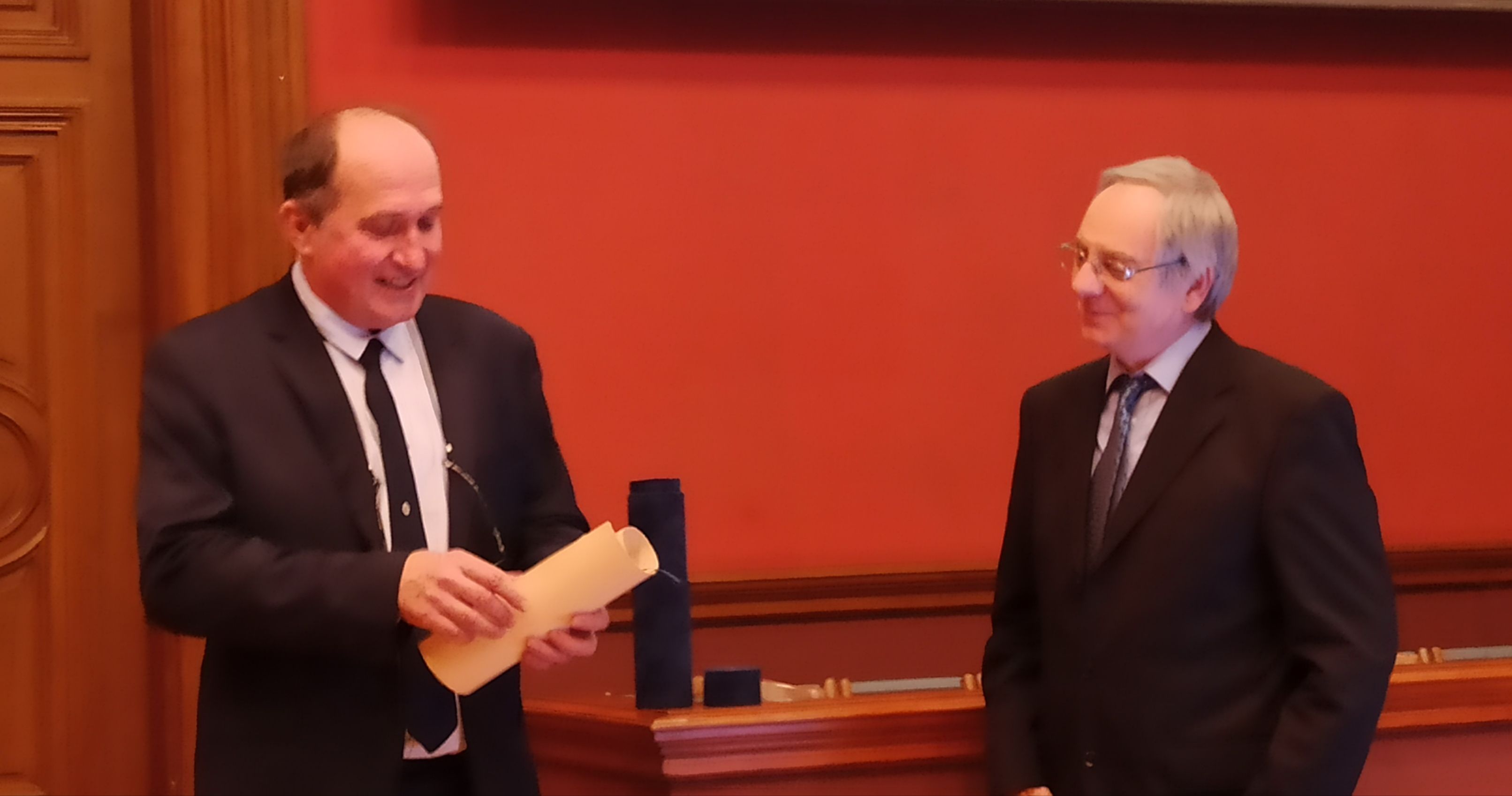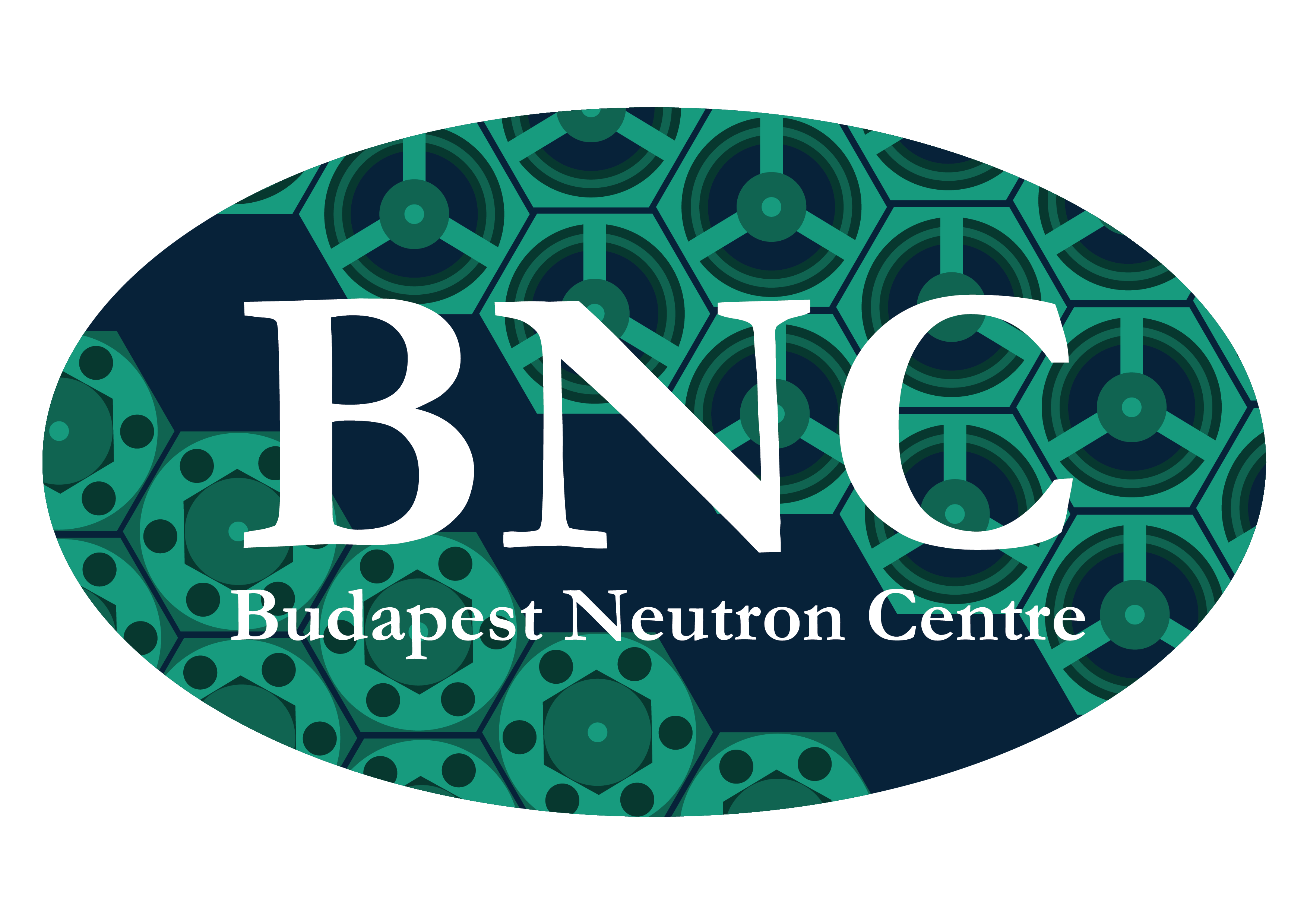Béla Faragó, external member of the Hungarian Academy of Sciences
 |
Dr. Béla Faragó, head of the International Scientific Advisory Committee of BNC, distinguished scientist of Institute Laue Langevin (ILL), was elected as external member of the Hungarian Academy of Sciences (HAS) in 2019. It was only 27 April, 2022 that Dr. Faragó's membership was celebrated at HAS in Budapest. On this occasion academician Professor György Mihály, president of the Section of Physical Sciences of HAS praised the new member's scientific career and academician Ferenc Mezei recalled some of his personal memories on his decades long collaboration with Béla. Then Dr. Faragó gave his chair lecture in the Great Hall of HAS. The event was attended by many of the Hungarian neutron community with whom Béla reserved a living scientific connection over the many years of his working at ILL. | |
| Academicians Béla Faragó and György Mihály after the lecture |
Summary of the presentation entitled: "Research at a Large Scale Facility, Institute Laue Langevin (ILL)"
The Institute Laue Langevin (ILL) in Grenoble is a high-flux research reactor institute, funded by France / Germany / England but it is presently maintained by 10 European countries. It was introduced during the directorship of Nobel laureate Rudolf Mössbauer to operate it in a user system, i.e. experimental proposals from member states are to be submitted and evaluated by a scientific council. This system was then implemented in a number other research facilities. This creates interesting and difficult conditions for the scientists working here. The current principle is to help users 1/3 of the time, to develop equipment 1/3 of the time, and do their own research 1/3 of the time. It is a delicate balance that several researchers have failed to maintain while others have proved successful.
In this institute, academician Ferenc Mezei built the first instrument utilizing the method, the Neutron Spin Echo that he invented, which I was lucky enough to inherit in the late 80s.
Following the ILL tradition, I will give a brief overview in 1/3 of my time on the development(s) of the experimental setup(s) over the last thirty or so years and I will try to explain why.
In the second 1/3, I'll talk about why users love these instruments and for what they are good for.
In the third 1/3 of the time, I will talk about some selected research topics that are obviously related to neutron scattering and spin echo, but not exclusively, and on what progress has been made over those decades.
